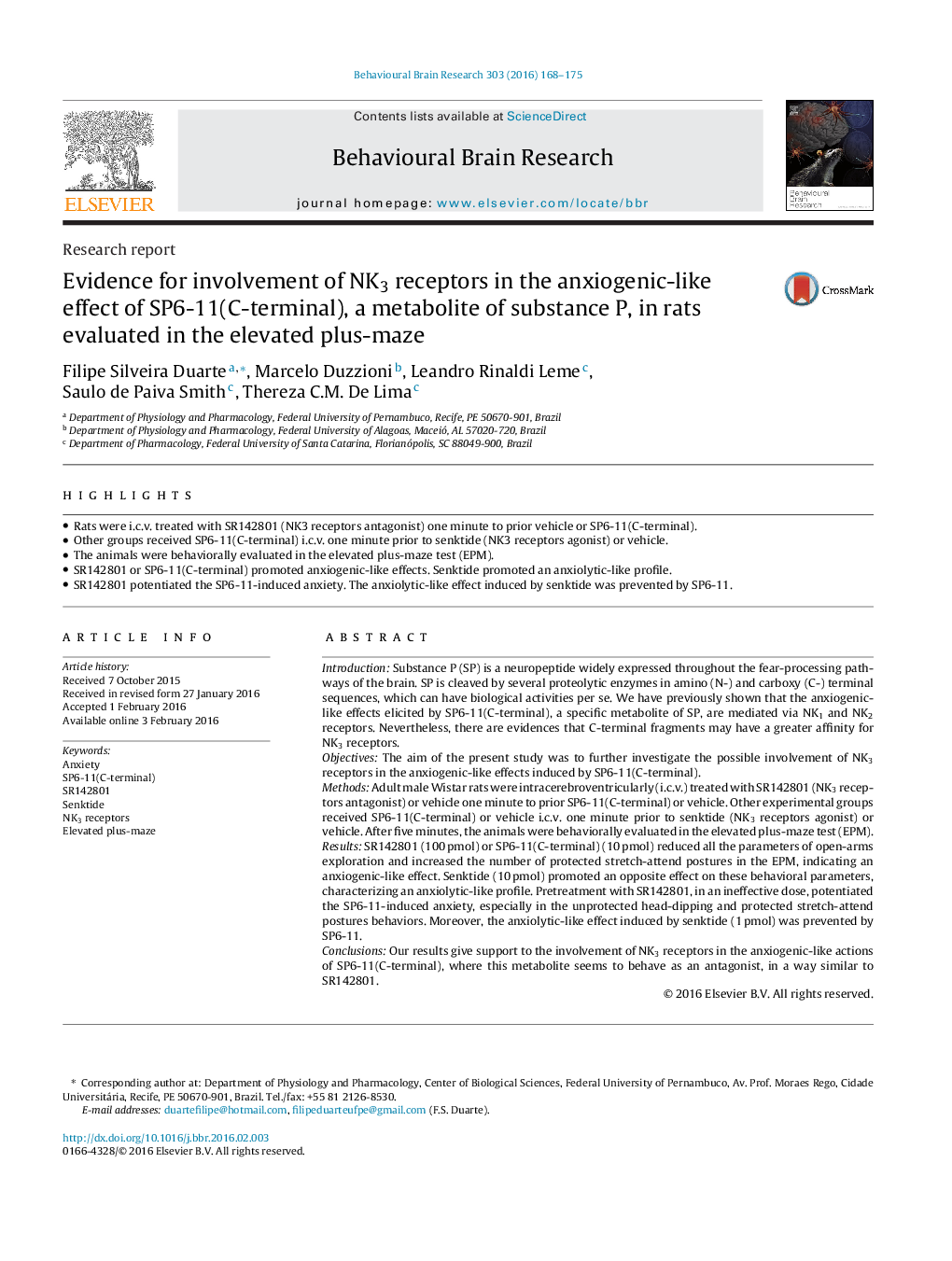| Article ID | Journal | Published Year | Pages | File Type |
|---|---|---|---|---|
| 4312238 | Behavioural Brain Research | 2016 | 8 Pages |
•Rats were i.c.v. treated with SR142801 (NK3 receptors antagonist) one minute to prior vehicle or SP6-11(C-terminal).•Other groups received SP6-11(C-terminal) i.c.v. one minute prior to senktide (NK3 receptors agonist) or vehicle.•The animals were behaviorally evaluated in the elevated plus-maze test (EPM).•SR142801 or SP6-11(C-terminal) promoted anxiogenic-like effects. Senktide promoted an anxiolytic-like profile.•SR142801 potentiated the SP6-11-induced anxiety. The anxiolytic-like effect induced by senktide was prevented by SP6-11.
IntroductionSubstance P (SP) is a neuropeptide widely expressed throughout the fear-processing pathways of the brain. SP is cleaved by several proteolytic enzymes in amino (N-) and carboxy (C-) terminal sequences, which can have biological activities per se. We have previously shown that the anxiogenic-like effects elicited by SP6-11(C-terminal), a specific metabolite of SP, are mediated via NK1 and NK2 receptors. Nevertheless, there are evidences that C-terminal fragments may have a greater affinity for NK3 receptors.ObjectivesThe aim of the present study was to further investigate the possible involvement of NK3 receptors in the anxiogenic-like effects induced by SP6-11(C-terminal).MethodsAdult male Wistar rats were intracerebroventricularly (i.c.v.) treated with SR142801 (NK3 receptors antagonist) or vehicle one minute to prior SP6-11(C-terminal) or vehicle. Other experimental groups received SP6-11(C-terminal) or vehicle i.c.v. one minute prior to senktide (NK3 receptors agonist) or vehicle. After five minutes, the animals were behaviorally evaluated in the elevated plus-maze test (EPM).ResultsSR142801 (100 pmol) or SP6-11(C-terminal) (10 pmol) reduced all the parameters of open-arms exploration and increased the number of protected stretch-attend postures in the EPM, indicating an anxiogenic-like effect. Senktide (10 pmol) promoted an opposite effect on these behavioral parameters, characterizing an anxiolytic-like profile. Pretreatment with SR142801, in an ineffective dose, potentiated the SP6-11-induced anxiety, especially in the unprotected head-dipping and protected stretch-attend postures behaviors. Moreover, the anxiolytic-like effect induced by senktide (1 pmol) was prevented by SP6-11.ConclusionsOur results give support to the involvement of NK3 receptors in the anxiogenic-like actions of SP6-11(C-terminal), where this metabolite seems to behave as an antagonist, in a way similar to SR142801.
